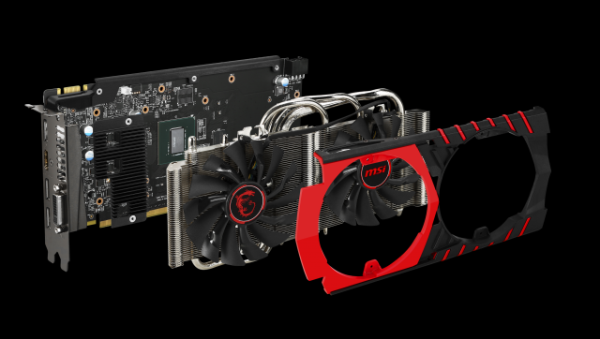Nvidia GeForce GTX 960 Review - Battlefield 4, Bioshock Infinite, Crysis 3 and Batman: Arkham Origins performance Review
Battlefield 4, Bioshock Infinite, Crysis 3 and Batman: Arkham Origins performance
Nvidia's first mainstream Maxwell card aims to sate 1080p gamers

Sections
- Page 1 Nvidia GeForce GTX 960 Review
- Page 2 Battlefield 4, Bioshock Infinite, Crysis 3 and Batman: Arkham Origins performance Review
- Page 3 Metro: Last Light performance, Further Benchmarks and Other Things to Consider Review
Nvidia GeForce GTX 960: Battlefield 4 Performance

The GTX 960 is designed for 1080p gaming, but Battlefield 4 is one of the less demanding titles we test – so there’s a chance that Nvidia’s latest could play this accomplished shooter at 1440p, too.
Nvidia’s card didn’t have any troubles with Battlefield 4 at 1080p: its average framerate of 48fps is good, and its minimum of 40fps is similarly smooth. That’s better than the cheaper R9 285, which hit 37fps, but the R9 280X was faster – two frames better at minimum, and three more when averaged.
The Nvidia card wasn’t as adept when we upped the resolution to 2,560 x 1,440. Its average framerate of 30fps ties the R9 285 but is three frames below the R9 280X. That average figure would usually ensure decent gameplay, but Nvidia’s minimum of 24fps is more problematic – it means that the game will occasionally stutter unless you compromise on quality at this higher resolution. The R9 280X, in contrast, returned a better minimum of 28fps.
The GTX 960 capably plays Battlefield 4 at 1080p, but it’s not far ahead of the cheaper AMD card, and the R9 280X remains better at both resolutions.
SEE ALSO: Best RPG Games
Nvidia GeForce GTX 960: Bioshock Infinite Performance

Nvidia’s card couldn’t overhaul AMD’s hardware in Battlefield, and that was the same in Bioshock. Its 66fps minimum and 85fps average framerates at 1080p ensure silky-smooth gameplay, but the Radeon R9 280X and R9 285 were both faster – not by much, but enough to sway us when prices are so close.
Bioshock isn’t too demanding, so Nvidia’s card could handle top graphics settings at 1440p: its average of 47fps is good, and its 39fps minimum means there won’t be any stuttering. That’s decent, but it’s no better than AMD’s cards – they average between 46fps and 48fps, and the R9 285 hit a 39fps minimum.
The GTX 960 can’t match AMD’s cards at 1080p, but there’s very little to choose between these chips at the higher 2,560 x 1,440 resolution. With only two frames of difference at minimum and average framerates, it’s a score-draw.
Nvidia GeForce GTX 960: Crysis 3 Performance

Crysis 3 remains one of the toughest games on PC, and a challenge for these cards even at 1080p. The GTX 960’s 44fps average is mid-table when lined up against AMD’s hardware, and enough to hit smooth gameplay, but its 28fps minimum is more troubling – it’ll cause the occasional stutter because it’s below 30fps. The R9 280X and R9 285 were a few frames faster in both benchmarks and, crucially, they never fell below that 30fps barrier.
The situation didn’t improve when we upped the resolution to 2,560 x 1,440. The GTX 960’s 30fps average is hindered by its 25fps minimum. Both of those scores can’t match the AMD cards, although the R9 285 and R9 280X’s minimums of 26fps mean neither can guarantee smooth play.
Crysis 3 is a demanding title, and it means that the GTX 960 – and its red-coloured counterparts – are only really suitable for playing this game at 1080p. At this more modest resolution the GTX 960 proved adept but, again, it’s beaten to the punch by AMD.
SEE ALSO: Our Favourite Monitors
Nvidia GeForce GTX 960: Batman: Arkham Origins Performance

This was the only test where Nvidia’s card pushed ahead of its competitors. All of the cards we’ve tested had no problems running the game at 1080p, but the GTX 960’s minimum and average framerates of 70fps and 121fps were far beyond anything AMD could manage – the nearest challenger, the R9 280X, hit 59fps and 94fps.
The GTX 960 led the way at 1440p, too, but AMD’s cards closed the gap. The GTX 960 hit minimum and average framerates of 54fps and 75fps, but the 280X was only two and three frames behind in those same tests.


